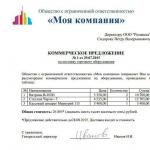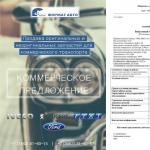Important elements of a company's competitive advantage

 Many managers believe that the best competitive advantage has traditionally been achieved by delivering more value at the lowest cost. However, a new paradigm for corporate success has now emerged that requires the same, but within the shortest possible time. An increasing number of companies are succeeding by establishing competitive-responsive advantages. These time-driven competitors belong to a new generation of companies that manage and compete in a variety of ways. Companies related to the new paradigm:
Many managers believe that the best competitive advantage has traditionally been achieved by delivering more value at the lowest cost. However, a new paradigm for corporate success has now emerged that requires the same, but within the shortest possible time. An increasing number of companies are succeeding by establishing competitive-responsive advantages. These time-driven competitors belong to a new generation of companies that manage and compete in a variety of ways. Companies related to the new paradigm:
use time costs as a key parameter of management and strategy;
use speed of response and flexibility to be closer to their customers, increasing their dependence on their services;
quickly reshaping their business models to serve the most attractive segments, forcing competitors to work with the least attractive ones;
set the pace of innovation in their industry;
grow faster and show higher profits than their competitors.
New generations of players are getting great results by focusing their organizations on agility and responsiveness. You will be able to enter the time-based competition if you meet three conditions:
Your value delivery system is two to three times more flexible and responsive than your competitors.
you have determined how buyers evaluate your offer, and have determined its price in accordance with this;
you have a strategy based on a new approach to time that can surprise your competitors.
Most of the time before the consumer a product or service spends in anticipation. Delays occur for the following reasons:
procedural impediments, including small production or information capacity, inefficient scheduling practices and approval procedures;
quality problems, i.e. the need for physical and intellectual improvements due to poor-quality initial product development;
structural difficulties, such as confusing product and information flows, functional interference, and the distance between interconnected facilities.
At the same time, the main reason for inflexibility is a business model built on economies of scale and control, and not on the principles of quick response.
To increase responsiveness, the company must be organized with an eye to saving time and greater foresight. To do this, many companies disband their functional units and create permanent multifunctional teams instead. The members of such groups focus on the whole process, products, projects, customers and/or competitors. Teams include everyone who is able to slow down or speed up the process, and are often located in one place. The criterion of their activity is the desire to achieve the goal, and not just the use of resources.
Price for the benefits provided to your customers
Buyers of time-driven companies receive special value, although sometimes they do not understand the importance of a faster response to their needs. Flexible, faster response rewards your customer by:
less inventory required;
purchase decisions can be made not in advance, but closer to the required time;
the risk of canceling or changing orders by the buyer is reduced;
cash flow is accelerating;
provide more specialized service and customized products.
These and other benefits affect the economic position of buyers, thus creating customer value. Time-driven competitors retain some of the increased value through higher prices and greater market share. For example, one manufacturer accelerated its response time to inquiries and, as a result, gained market share and charged 20 percent more. Its distributors can pay higher prices and still make more money because their inventory turns over four times faster than the industry average.
An accelerated response creates a stronger dependence on buyers and thus increases market share. A supplier of a custom-made industrial product failed to increase its share of sales using traditional means, but did so after reducing response times by 75 percent on every order, including semi-finished products. Once buyers realized they could rely on the company as their sole supplier, its share of their purchases rose from 30 percent to 45 percent.
Surprise your competitors
The biggest risk you face in becoming a time-based player is that one of your competitors might do the same thing at the same time as you. If you and your competitor increase your reaction speed equally, any advantage you each achieve will be neutralized in the marketplace and only your customers will benefit.
The true value and additional profits will come only if you can achieve a solid responsive advantage over your competitors, which is difficult if not impossible for them. You can do it like this:
initiate and implement programs to reduce delays in your organization;
refuse to provide benefits to buyers until those benefits become significant (i.e. do not act prematurely);
focus your marketing resources on those customers who will benefit the most from a faster response and thus are willing to pay a price premium;
gain time by diverting the attention of your competitors from your changes;
maintain its leadership by regularly improving response.
Initiating and executing a program that rapidly increases the responsiveness of an organization is no easy task. It must compete with other programs that require attention. In addition, it is difficult to delegate this work to subordinates, because increasing the speed of reaction requires the destruction of functional boundaries and obstacles. Thus, you must constantly remain involved in the process. In addition, the implementation of responsiveness programs is causing a change in business philosophy: top management must shift its focus from cost to time, and its functions from control and functional optimization of departments to providing resources to reduce time costs throughout the organization. It is important to understand that time is your number one competitor.
Time and quality
Speed in the market has become a popular goal. The sooner a company can innovate or fulfill an order, the higher the customer loyalty and the more opportunities to manage it. But the problem is how to reconcile quality with speed. Quality focuses on correct execution. Speed in the market means overtaking competitors. But if you hurry, you will make people laugh!
In fact, quality improvement and time compaction are consistent with each other: pursuing one goal, you achieve another. For the most part, quality problems manifest themselves precisely in the loss of time: due to poor-quality components, information that did not arrive on time, the need to re-do the work, the visit of service employees that did not solve the problem, and so on. The focus on time involuntarily forces to eliminate these shortcomings. "Fast" companies achieve quality in all their processes - from the development of new products to their shipment to the consumer.
It should not be surprising that quality and speed go hand in hand in the market. See what companies with a good, organized quality culture are doing - the same as companies that focus on time compaction.
The general trends are:
The ability to perceive the company as a set of processes. Managers usually see the company as a set of organizations and control units. But those who pursue quality and speed also view their companies as a set of processes that must work smoothly and correctly. A corporation that takes quality seriously asks itself the same questions as a company that condenses its work cycle: “What are our processes? What do they interact with? How can we make them more reliable? What steps do we not need if we get the most important steps right?”
Measurement. The business must be able to measure the process before introducing improvements. This applies to both order registration and transport, development and use. Motorola, for example, measures the cycle time along with measurements of production volumes and deviations. When developing a new product, the countdown begins already at the moment of its idea.
Common goals and cross-functional coordination. Companies are usually organized for ease of administration: salespeople under one management and financial system, engineers under another, and so on. But the buyer does not view his supplier in this way. Instead, he wants to see a single organization connected to his business - from salesman to engineer - operating as a single unit with one common goal - his order.
Employee empowerment. It has become a cliché by now that top management actions are the first thing required to improve quality and time. But how are these actions measured? The number of speeches given or award ceremonies attended? Employees have one very good indicator of top management performance: does it empower them to find problems, develop solutions, and manage new processes?
Response Rules
Corporate operations - more precisely, their value creation systems - are subject to a certain set of rules. These are the so-called response rules. Leaders who appreciate the value of these rules and apply them can achieve amazing results. These rules include the following:
Rule from 0.05 to 5
Rule 3/3
Rule 1/4 - 2 - 20
3x2 rule
Rule from 0.05 to 5
In any business, the amount of time required to provide a service or order (production and delivery of a product) is much less than the actual time the service or product spends in the value creation system.
For example, a manufacturer of heavy vehicles needs 45 days to prepare an order and only 16 hours to assemble. In fact, a product is created in less than 1 percent of the time it spends in the system.
The 0.05 to 5 rule sheds light on the extremely low productivity of most organizations. Most products and many services only truly create value for only 0.05 to 5 percent of the time they spend in their companies' value-creating systems.
Rule 3/3
Between 95 and 99.95 percent of the time, a product or service does not acquire value while in the system of its creation; a product or service is waiting.
Waiting time consists of three parts:
drawing up a batch of which a particular product or service is a part;
compilation of the previous batch;
preparing for the adoption and execution of the decision to send the party to the next stage of the value-adding process.
In general, 95 to 99.95 percent of lost time is distributed relatively evenly among these three categories.
The amount of time lost is very little affected by the intensity of work. But a smart approach changes everything. Companies that reduce the size of the batches they produce (whether they are physical goods or packages of information) and simplify workflows significantly reduce wasted time in their value-added systems.
For example, when a hospital equipment manufacturer halved the size of a standard production lot, the time required to produce was reduced by 65 percent. After the workflow was streamlined to reduce material handling time and the number of intermediate events requiring scheduling was reduced, overall time was reduced by another 65 percent.
Because these improvements are significant, this company has simply avoided the 0.05 to 5 rule. Its time productivity has increased by more than 200 percent.
Rule 1/4 - 2 - 20
Companies that are serious about saving time experience significant improvements in their work. With a 1/4 reduction in the time it takes to deliver a product or service, the productivity of labor and capital can often double, resulting in a 20 percent reduction in costs.
The US durable goods manufacturer has cut delivery times from five weeks to just over one week. Efficiency in the use of labor and assets has more than doubled. Costs have fallen significantly and profits have become well above average.
3x2 rule
Companies that have reduced lost time have achieved a tangible competitive advantage. Growth three times greater than the industry average, with a twofold increase in profitability is quite achievable.
The building materials manufacturer has reduced the time it takes to complete any order to less than ten days. Most orders may be at the disposal of the buyer in one to three days from the moment they are placed. Other competitors require 30 to 45 days for this.
The fast-acting company has grown by more than 10 percent a year over the past ten years, becoming the market leader; The average growth rate for the industry over this period was less than 3 percent. The quick-acting player's pre-tax net asset income is 80 percent - more than double the industry average.
The response rules apply to both service and manufacturing businesses. Companies investing in time and taking into account these rules:
will grow much faster than competitors and will be more profitable than them;
become closer and more important to their customers;
take the lead in their industries.
- Leadership, Management, Company management





